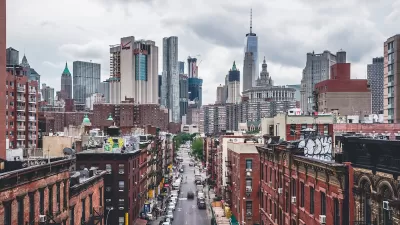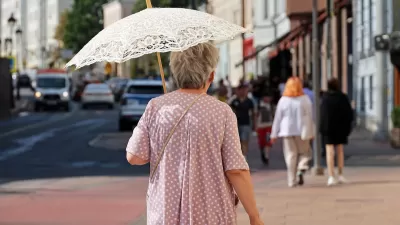A new study published in the Proceedings of the National Academy of Sciences shows how population growth increases greenhouse gas emissions. More importantly, two demographic factors shape the increase, urbanization and aging -with opposite effects.
It would appear that Green Metropolis author, David Owen, who preaches the green virtues of New York City, may have nothing to fear in the report as the urbanization=increased emissions factor applies to developing nations, while the aging=decreased emissions relationship applies to industrialized nations.
"A team of US and Austrian researchers found that urbanisation could increase emissions by up to 25% in some developing nations.
However, industrialised countries could see emissions fall by about 20% as a result of ageing populations."
From USA Today: Study - Slower population growth could reduce climate change: "A slowing of population growth could significantly reduce greenhouse gas emissions by 2050, according to a new study published (Oct.12).
"Scientists estimate global population could rise by more than 3 billion, mostly in urban areas, by midcentury but a slower growth path could cut emissions 16% to 29%, according to the study in the Proceedings of the National Academy of Sciences."
From NCAR: Population trends: Another influence on climate change: The study "was conducted by an international team of scientists from the National Center for Atmospheric Research (NCAR)" and other organizations. "If global population growth slows down, it is not going to solve the climate problem, but it can make a contribution, especially in the long term," says the study's lead author, Brian O'Neill, an NCAR scientist."
Thanks to Gregory Bungo
FULL STORY: Population shifts 'substantially influence' emissions

Alabama: Trump Terminates Settlements for Black Communities Harmed By Raw Sewage
Trump deemed the landmark civil rights agreement “illegal DEI and environmental justice policy.”

Study: Maui’s Plan to Convert Vacation Rentals to Long-Term Housing Could Cause Nearly $1 Billion Economic Loss
The plan would reduce visitor accommodation by 25% resulting in 1,900 jobs lost.

Why Should We Subsidize Public Transportation?
Many public transit agencies face financial stress due to rising costs, declining fare revenue, and declining subsidies. Transit advocates must provide a strong business case for increasing public transit funding.

Paris Bike Boom Leads to Steep Drop in Air Pollution
The French city’s air quality has improved dramatically in the past 20 years, coinciding with a growth in cycling.

Why Housing Costs More to Build in California Than in Texas
Hard costs like labor and materials combined with ‘soft’ costs such as permitting make building in the San Francisco Bay Area almost three times as costly as in Texas cities.

San Diego County Sees a Rise in Urban Coyotes
San Diego County experiences a rise in urban coyotes, as sightings become prevalent throughout its urban neighbourhoods and surrounding areas.
Urban Design for Planners 1: Software Tools
This six-course series explores essential urban design concepts using open source software and equips planners with the tools they need to participate fully in the urban design process.
Planning for Universal Design
Learn the tools for implementing Universal Design in planning regulations.
Smith Gee Studio
Alamo Area Metropolitan Planning Organization
City of Santa Clarita
Institute for Housing and Urban Development Studies (IHS)
City of Grandview
Harvard GSD Executive Education
Toledo-Lucas County Plan Commissions
Salt Lake City
NYU Wagner Graduate School of Public Service




























